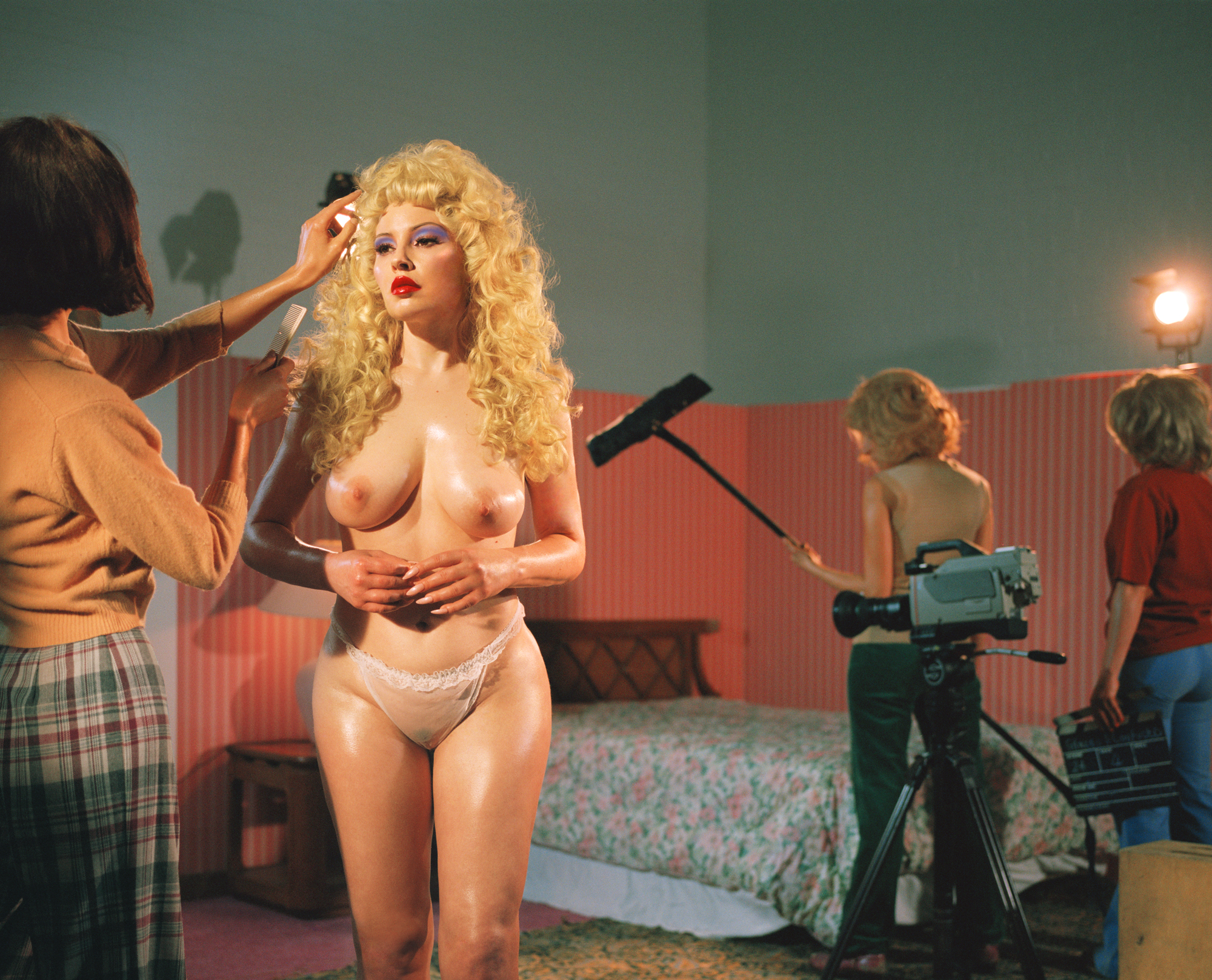Nadia Lee Cohen’s work needs little introduction on i-D. From her collaboration with Millicent Hailes in 2015 to her solo show in Spain last summer, we’ve been, like so many others, continually fascinated by the elevated, cinematic portrayals of womanhood the photographer creates. And, like a method actor continually fine-tuning her role as one such woman, Nadia too remained a source of fascination; just as mythologised as the bodies in her images.
Based in Los Angeles and often assumed to be American, owing to the recurring motifs of old Hollywood and classic Americana in her work, Nadia in fact grew up in London, moving west after graduating from London College of Fashion. This lineage, and its juxtapositions, can be traced throughout her first book, Women, an anthology of her signature work
A mixture of subjects, some haughty looking, others less guarded, some familiar, some unknown, the book embodies the very best of Nadia’s world. Whether it’s Alexa (Demie) poolside, caked in makeup but still tanning herself beneath the Hollywood sign, or Lilly, tentatively peering out of her curtains yet completely nude, or Anja, pregnant, solemn, leaning against a kitchen counter, there’s infinite stories wrought across each of their faces and bodies.
Here, Angela Hill of IDEA, the publishers behind Women — its fastest selling book of all time — discusses with her the long journey to creation, the many different artists, actors and directors that informed its narrative, and shooting Charli XCX in a motel full of sex workers and customers.
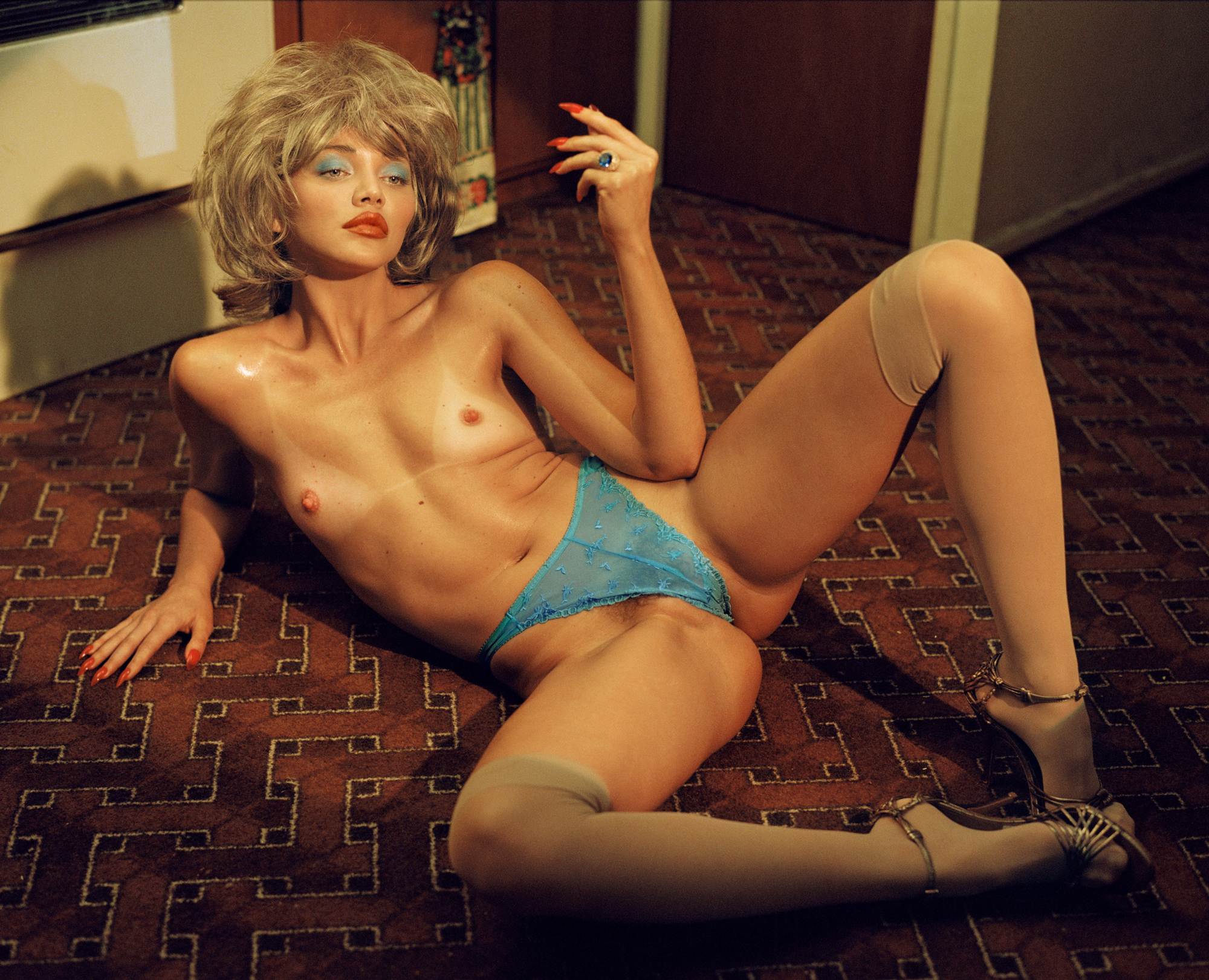
What were you like as a child and how was your childhood?
I was quite unfeminine, didn’t like wearing dresses or brushing my hair. I was raised on a farm in rural England by very relaxed parents. I spent my time running around wet fields covered in mud, hunting for fossils, stepping in cow shit and building fairy houses out of twigs. I believed in everything there was to believe in; Father Christmas, witches, fairies — the lot. Nothing could stunt or interrupt my imagination, probably because of how remote the surroundings were.
Why was I so moved by these images? I was hesitant about publishing this book at first, it was the polar opposite of everything we had done before and I am steeped in my love of documentary-style grunge street-type photography. At first the images are brash and obvious and screaming out at you from the page. When we received the first advance copies in the office. I looked through the book and felt more and more emotional. I walked home mentally going over details from some of the images, some subjects appeared so desolate to me, so beaten up by life (we see Scarlett, young yes but already having that world weary look, sitting simultaneously smoking and breast feeding in Hampstead; the lighting is exquisite, the setting dark and heavy, foreboding almost. On later viewings of this image I am drawn to the toast rack, flowers and vase; exactly the vase and flowers my grandmother would have. It’s one of my favourite images in the book), there was a sadness, more than a melancholy, because maybe one indulges in melancholy from time to time and these felt like lives lived that there was a lot to forget about.
I was reminded of the film The Thin Blue Line (1988) — both in terms of the imagery/scenarios and the soundtrack too which is in turns haunting, plaintive and beautiful. The film is a reconstruction documentary (and was controversial because of this) as is Women.
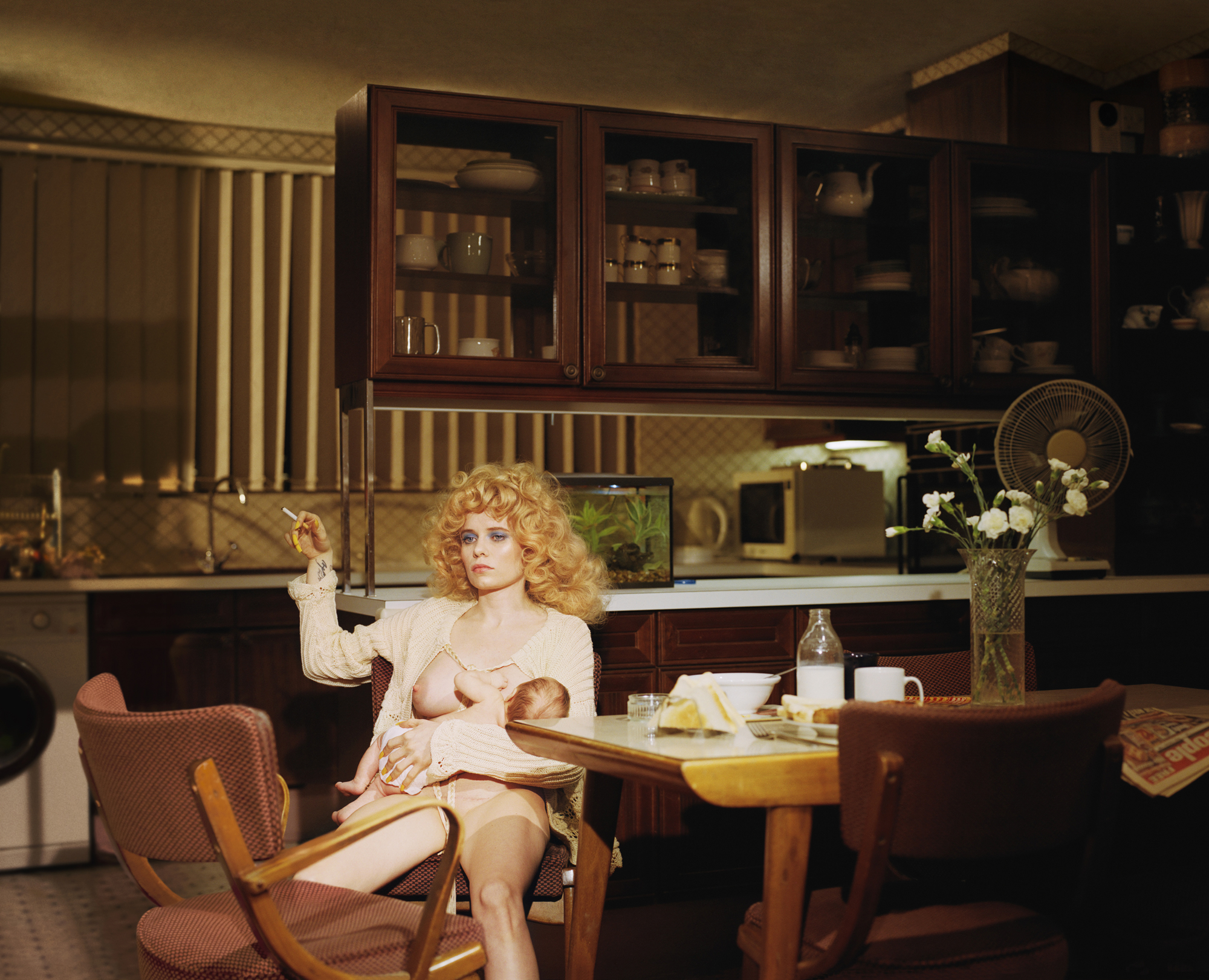
The location of the last image in the book is of a flat in Finchley and I was reminded of November Sunday evenings at home, suburban London, as a teenager; a feeling of despair, a heaviness, the thought of school the next day, the routine of every Sunday. I got the feeling some of the women you photographed were left alone in every sense after the shoot — all the glitz and glamour gone — just themselves to deal with. Is this a valid assumption?
I agree in the sense that there is an approach of adding and subtracting throughout. Adding in terms of the hair, makeup, nails, and general theatrics of their appearance. Subtraction however, in the form of the setting, posing and mood; this is where the darker element settles in. The locations, even if domestic, tend to be somewhat remote or desolate. I’m personally drawn to this sort of space and want the models to reflect their surroundings in their pose, or ‘non-pose’ actually. The idea is that they are captured mid-movement, off guard, or a split second after asking them to relax, slump, hunch, ‘be sleepy’, etc. The majority of the best images seem to be towards the end of a shoot, when the model is maybe slightly more comfortable and has had time to settle into the situation and accept their respective character. Scarlett in particular — tiny baby Mosco was only two months old and was screaming and crying as he didn’t want to feed, the atmosphere was quite intense until he eventually latched on after around eight attempts, so there was a genuine sense of relief felt at the moment that photo was taken.
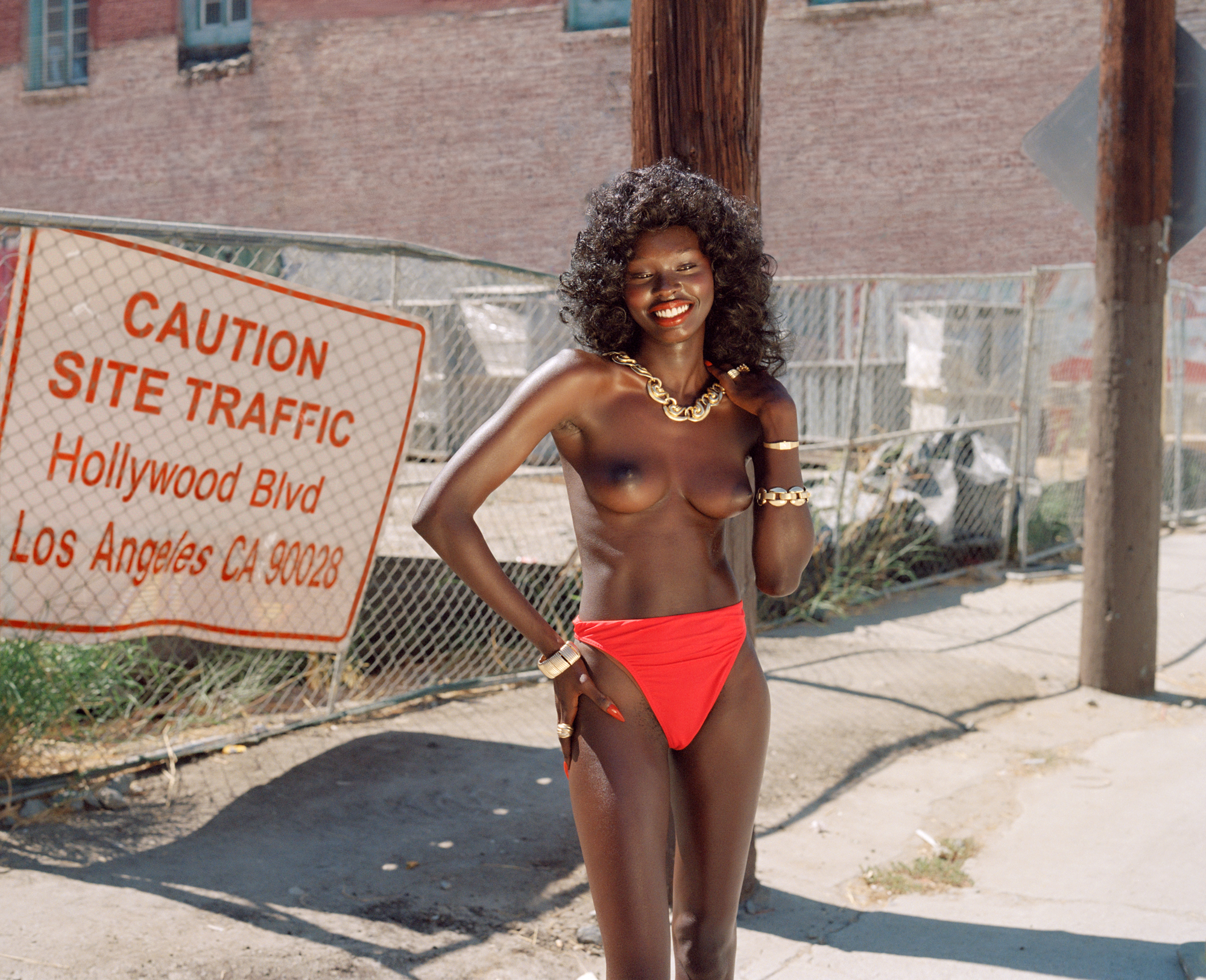
You are in the book, maybe in more ways than just your self portrait. A photographer friend of ours was in the office recently and he said something very interesting in that he didn’t resonate with other photographers’ work if he couldn’t see something of that photographer in their work. And then I thought of how much of Nan Goldin’s work is Nan Goldin herself, or Corinne Day or Tina Barney themselves. We see Finchley and Hampstead juxtaposed with Palm Springs, Brooklyn and LA in the location credits; was it just a practical decision as that was where the models were or was it important for you to revisit your London background and mix it with the high contrast of LA?
It did feel important to have London in there. This was one of the elements I felt missing when I looked at the body of work around two years ago; so I made a conscious effort to photograph the places that resonated. The sentimentality is present in the smaller details such as the popping burnt toast and patriotic England mug in “Shocking”. Or the copy of The Sunday People and pint of milk in Scarlett’s; these are nostalgic memories for me. I initially wanted to travel to California as it all seemed very preserved in terms of locations and signage that were still intact from the late 70s-early 80s, and I’m definitely not an advocate for modern architecture. I felt this was missing in the UK, but the more time I spent away from the UK the sooner I realised that this isn’t the case at all. I just struggle with a tendency to become blind to what inspires me about a place unless I am away from it for a long period of time. I’ve actually just got back to the UK following the longest I’ve ever been out of the country and the smallest elements start to feel novelty and quintessentially British. I really start to notice and appreciate every Mr Kipling cake.
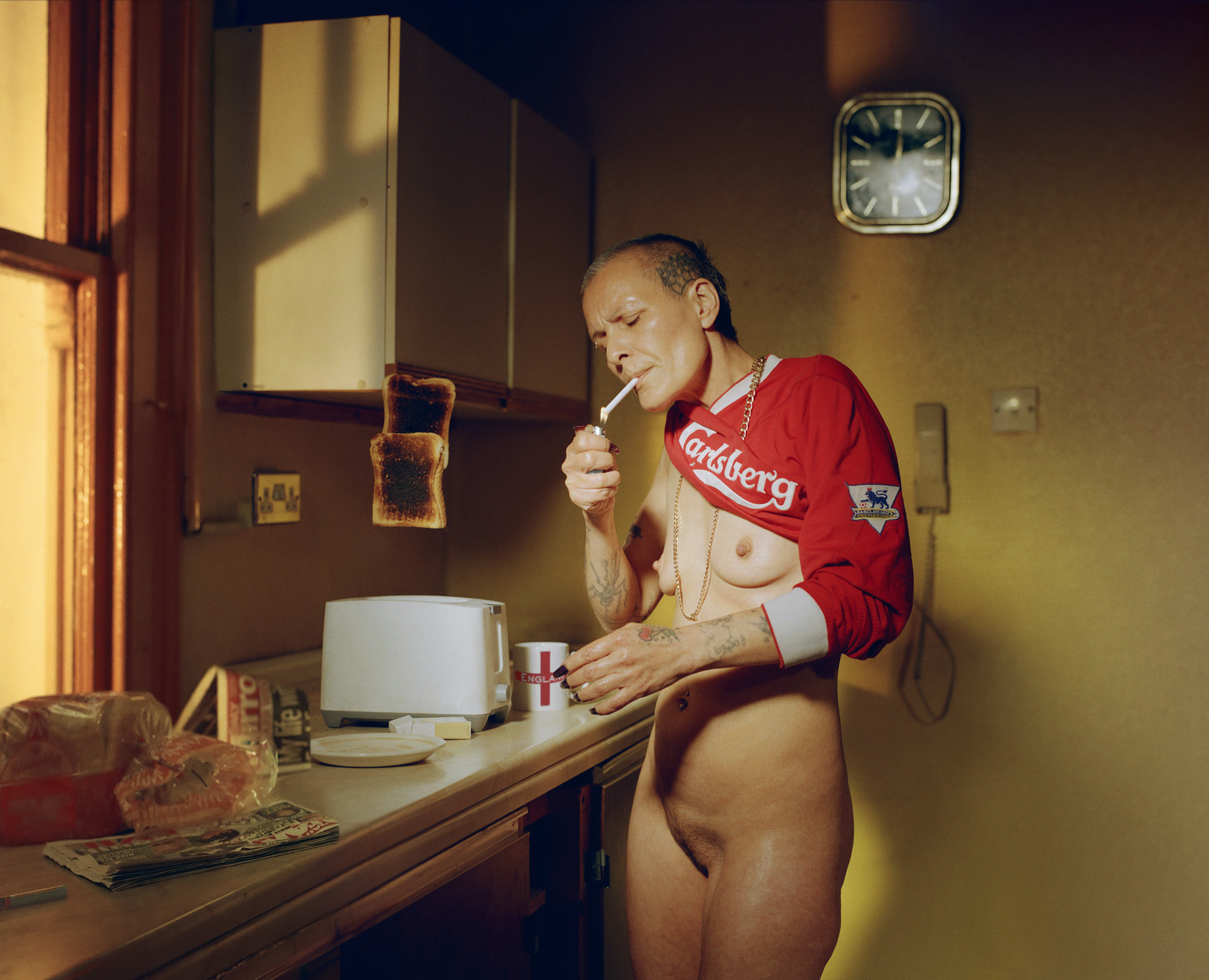
Do you agree with this sentiment that, like Freud’s dream analysis, you are every subject in this book?
That’s hard to answer without sounding pretentious, but yes, not in an overt way, probably just in the choice of an object. I’m not sure if this is a great example, but there is a wig that is used in several images that we named ‘Aunty Paulene’. The name came from a time when my mum’s friend Paulene turned up at her house sporting it and it wasn’t received in the way that she had hoped, as mum fell about laughing. So she quickly whipped it off and I adopted it. The wig actually looks a bit like my hair, so perhaps this suggests some sort of repressed Freudian desire to inflict this hairstyle on several people.
The book was the fastest selling of any book we have published; what do you think most people’s reasons are for wanting these images so much? For me, I want to look at them again and again and every time I do I notice something else (I have the same feeling with Van Gogh, I notice one flower more than I had ever done before or the way the wood in a chair is painted); another intriguing detail, a fold of fabric, colours, lighting — they are works of art, each one a tableau, a film, movie that the viewer can construct in their mind. How long did it take from the idea of an image to casting, staging and achieving the final print you were happy with?
I can’t get over that and probably never will. I’m completely speechless at the response it had. I don’t know because I can’t look at them from an objective perspective. Though I do think people enjoy narrative and storytelling. I certainly do in the photography work that I admire, even if it is predominantly documentary, the capture of drama within a still image can make the most mundane of situations magical. One of my favourite books is Ray’s a Laugh by Richard Billingham, the situations of his mother and father in a Birmingham council flat have those same feelings that you mentioned for me in terms of noticing something new every time I look at them. I feel like I’ve gone off topic, so to answer your question it took absolutely ages from initial idea to execution, especially when I ran out of money for production and had to produce the shoots myself; but those were almost the most fun.
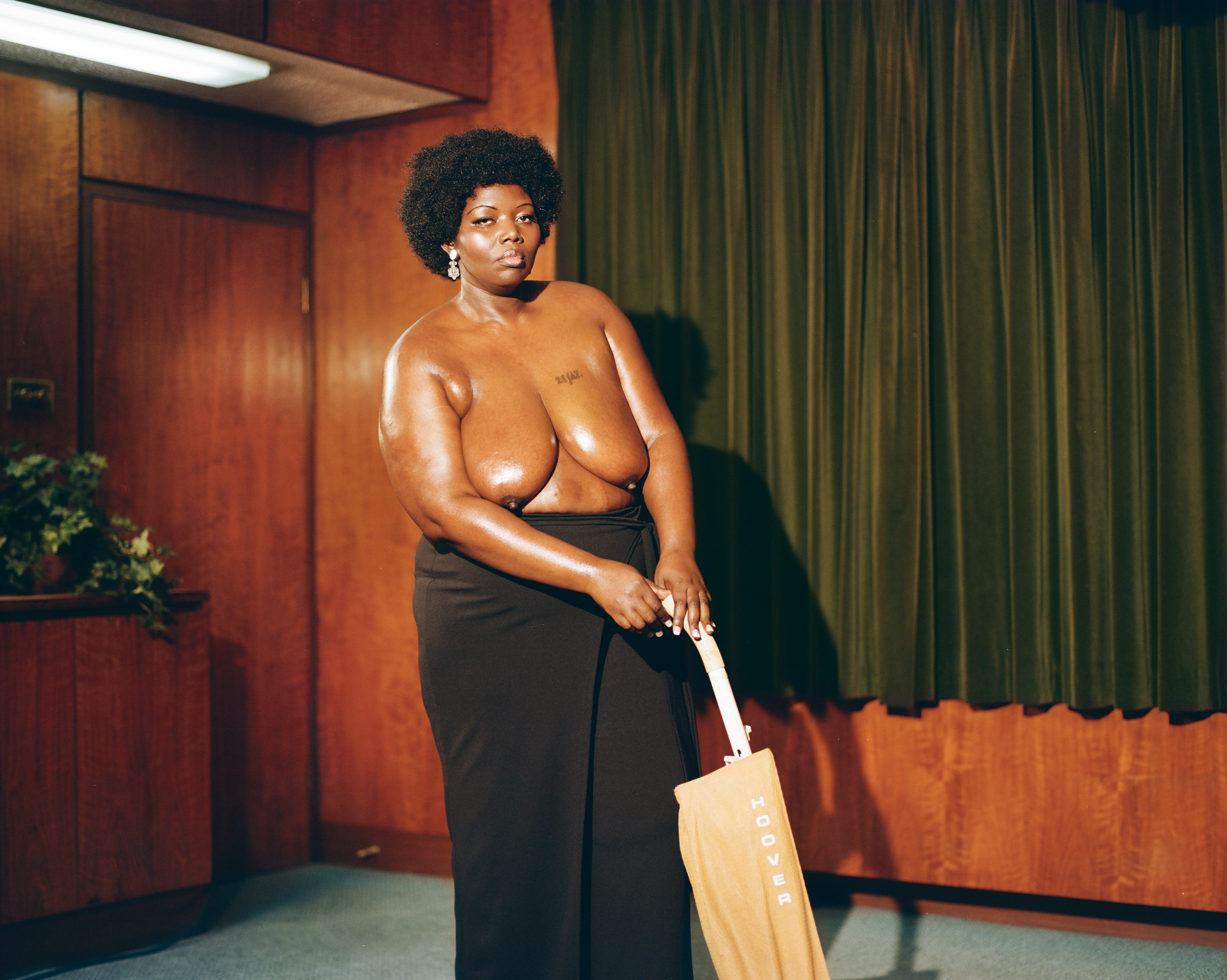
I have a stream of consciousness that plays out words, stills from films, music, images etc like triggers that inspire me; it changes from time to time but it has long been there since childhood and it often plays out like this; herbs, British Folk Music, Essex Marshes, owls, eagles and kites, Ralph Vaughan Williams, KES, The Loneliness of the Long Distance Runner, The Go-Between, Edwardiana… like a mantra I have to come back to remember in my work to stick to what is ‘me’. Would you say your main inspiration is film? Which films or directors have really moved you? I love the feeling of watching something and feeling changed afterwards, feeling “OK, that can be done”, “that does exist, that brilliance” and I strive to achieve my goals all over again.
Yes and I almost feel guilty for having the same inspirations, but you can’t help what initially shapes you and I continually revisit those with the guilt that I haven’t found something new. A lot of it is from film absolutely, I owe a lot of it to my punk teenage boyfriend who had impeccable taste in film, music and art. I think my taste grew from that. It does come from everywhere though, not just Stanley Kubrick and Fellini. I’m interested in food packaging, signage, pointless trinkets and personal objects in charity shops. Also any artwork that puts a spotlight on mundanity. Duane Hanson’s sculptures epitomise this idea and have been a constant source of wonderment and inspiration. How fabulous would it be to have one in my living room one day.

Which was the most difficult image to achieve?
Charli’s without a doubt. It was photographed towards the end of the project and I had to go back to shooting in a similar style to how I started, with minimal team and minimal funds. Charli is a famous person and we had never met, so when her management asked if there would be ‘security’ at the location I had to explain that there would not… I drove around Hollywood on Friday night to location scout with Sami Knight (hairstylist) and remembered a particular motel. It’s run by this friendly man that I met five years previously, we drove by and it still looked as great as I remembered, he was still there, quietly vacuuming the green carpeted steps outside as though no time had passed. He remembered me and said we could shoot there the next night for the price of a room; $145, a bargain. However, when we turned up the following evening, (now Saturday night) it was quite a different atmosphere. The solitary vacuumer was replaced with a flood of men in tracksuits looking for debauchery. They were intermingled with determined looking sex workers. I found the situation interesting, but Charli’s management didn’t quite feel the same and were terrified generally of placing her in a situation that was unsafe, also concerned that someone might see her and snap a photo on their phone and sell it to TMZ or something. The entire night was a dramatic obstacle course of trying to get this photo at any given quiet moment (there were none). Charli was marvellous though, very calm and this shows in the final image which reflects none of the chaos that was felt that night. This was the only photograph I wrote about in the back of the book, titled ‘Motel Notes’.
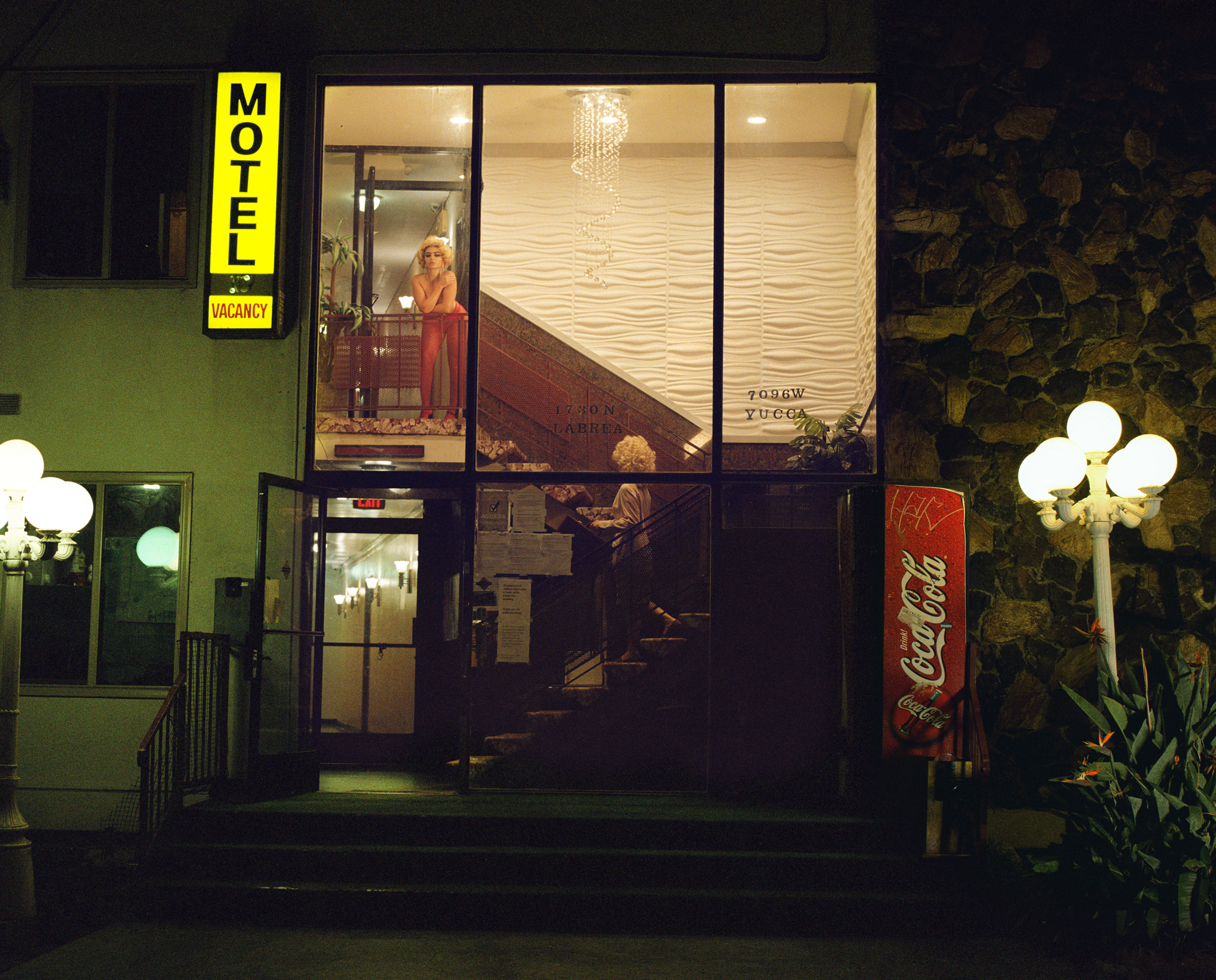
Can you remember when you first thought of doing this series or was it that it was only after meeting one particular woman that you felt inspired to make it a project?
I started in university, it was part of a project that I shot for my end of year assignment and I was naive enough to think that I could complete it in a year. Thank god I didn’t, it would have been terrible. My tastes changed and developed so much over the course of its progress, though there are one or two still in the book from those very early photo shoots that show the progression.
What next for you? What is driving you forward into 2021?
I’m the worst at working on more than one thing at a time. I was supposed to be working on something else last year but I put everything off in order to get the book out. I’m reluctant to mention what the next thing might be in case it ends up taking me just as long to complete!
‘Women’ by Nadia Lee Cohen is currently sold-out, but will be reprinted soon and available at ideanow.online. Email nadiasoldout@contactideanow.com for updates.

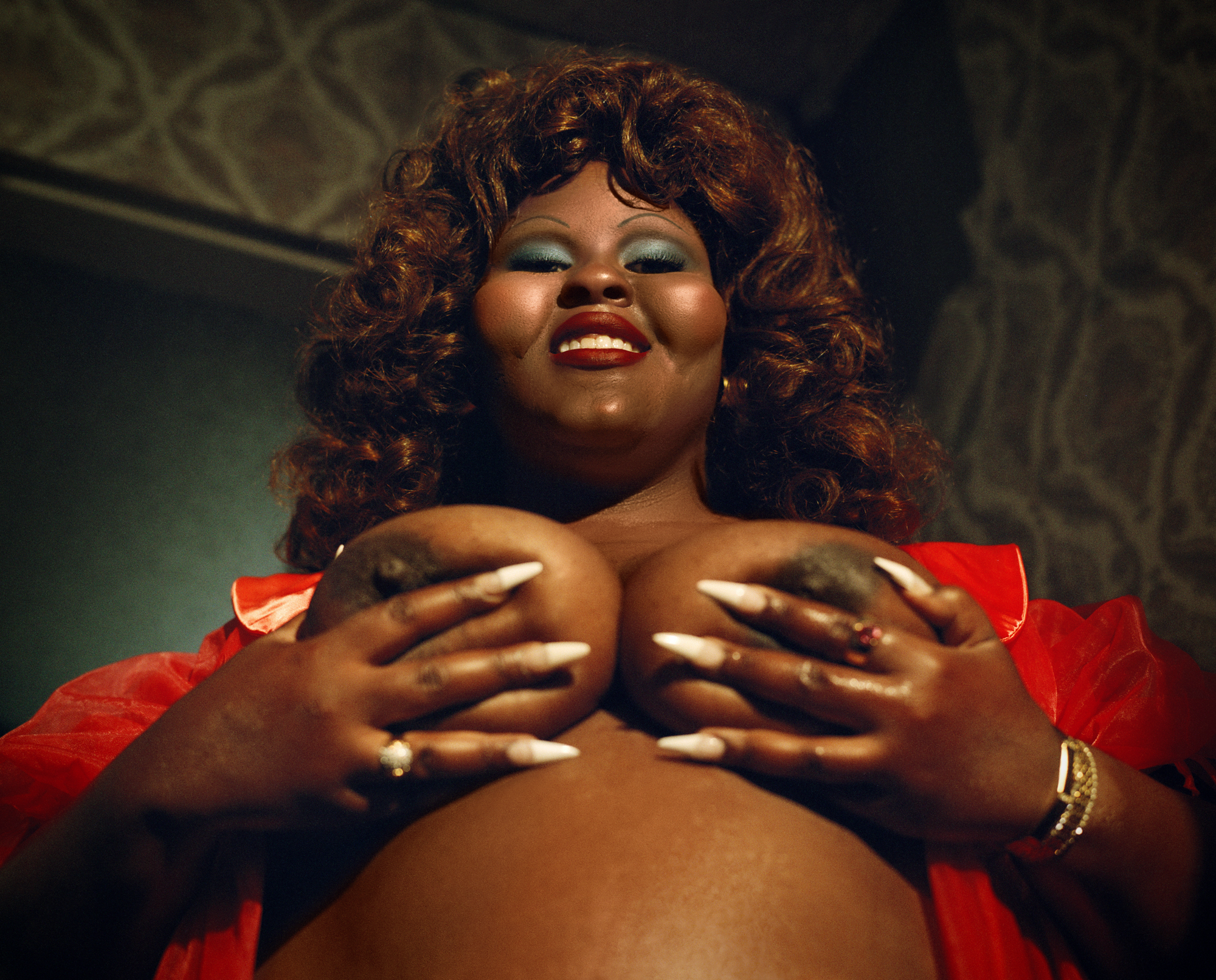
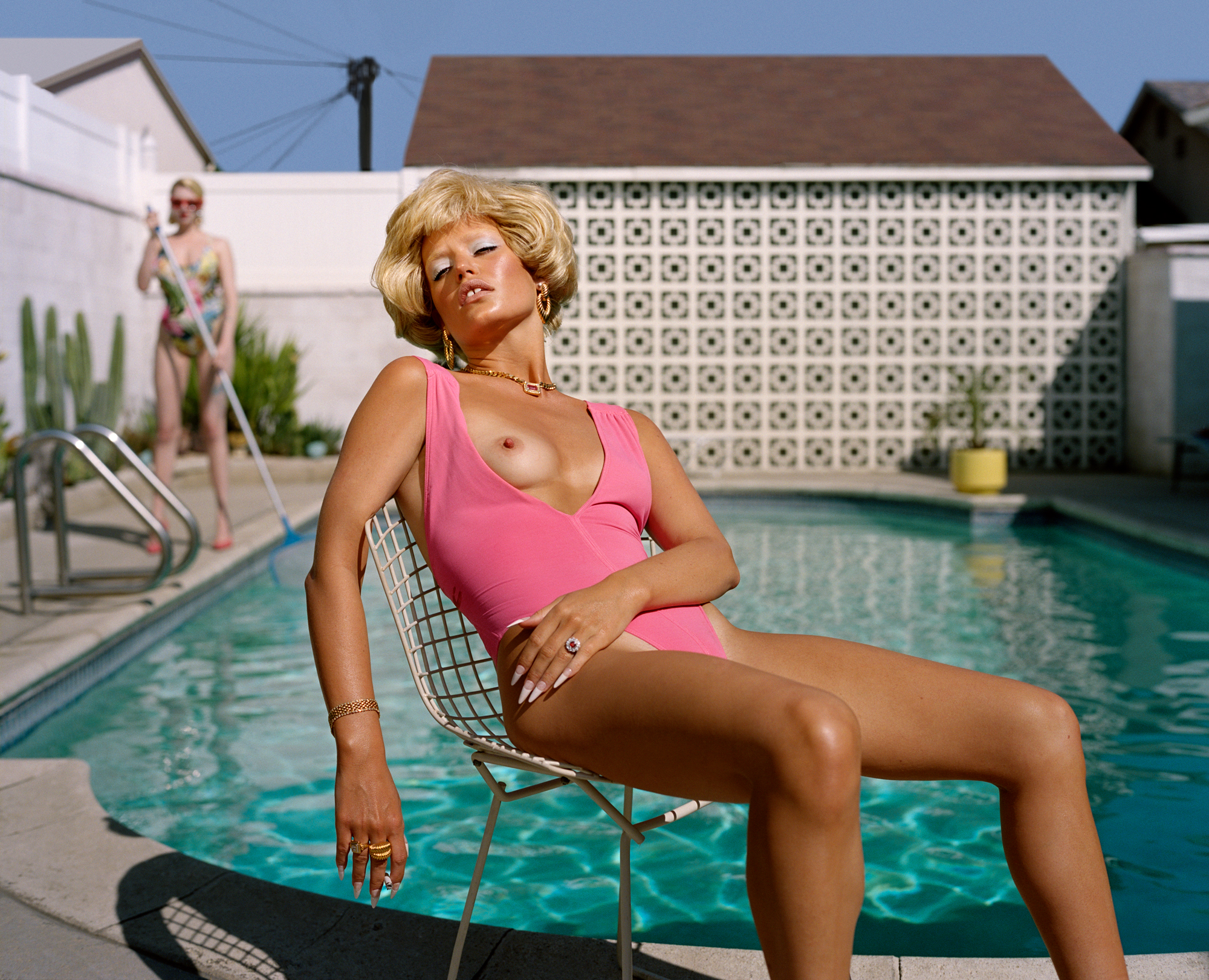
Credits
All images courtesy IDEA
